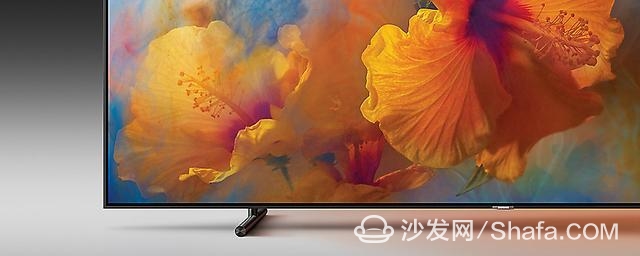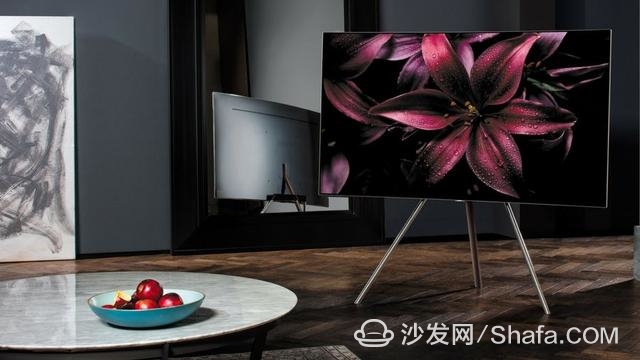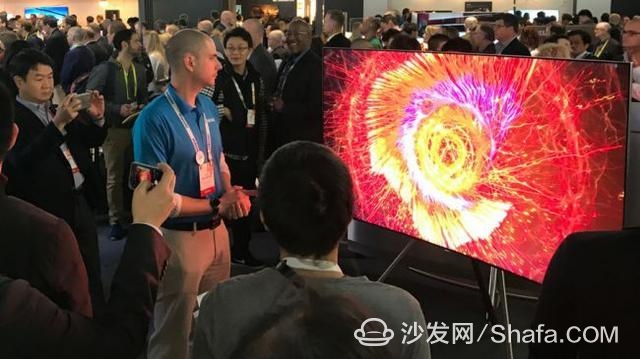What is Samsung QLED TV? Should we not buy it?


Samsung's QLED TV lineup today is the Q9, Q8 and Q7 series. They have the so-called metal quantum dot technology, a wider viewing angle, and a deeper black level. Samsung claims that the new TV can reach 100% color value and its peak brightness is 1500 to 2000 nits, which is twice that of its 2016 SUHD TV.
However, the problem is that every TV manufacturer will always say that this year's TV is the best, and those unintelligible concepts, all kinds of English abbreviations, honestly speaking, will really make people less aware of it. Consumers are very confused. OLED now we all know that Samsung QLED is how is it? Let's start with the basics first.
The first thing we must clarify is that some friends may understand the four letters of the QLED as "Quantum dot Light-Emitting Diodes," but this is not the case. The so-called QLED, in fact, it is still based on the quantum dot technology Samsung has been involved for many years.
So technically speaking, Samsung's QLED TV is not a QLED in the strict sense, because the latter should be capable of self-luminous pixels, and QLED TVs still need an independent backlight panel like LCD TVs.
So what is the working principle of QLED TV? First, all QLED TVs have a so-called "quantum dot filter." This filter is essentially a thin film composed of tiny semiconductor crystal particles that can precisely control the color output, thus replacing the red, green, and blue filters used in older televisions.
At this point, in fact, Samsung is not deceived, because on its official website we can see such an explanation: "The quantum light" shape sub-points are stimulated by the light source after the principle of color. Samsung QLED TV is based on quantum dot technology TV.†Here is a clear statement, Samsung QLED TV rely on backlight to stimulate quantum dots in order to achieve color control.
Samsung said that this year, they have applied new materials that can make quantum dots more efficient and have better light transmission efficiency. This brings greater brightness, wider color gamut and more accurate color rendering.
The most real contrast
First of all, say QLED TV vs. LCD TV. QLED TV has three main advantages for LCD: deeper black, better color rendering and a wider viewing angle. But then again, LCD TVs have dominated the big-screen TV market for a decade. These three disadvantages are what TV makers have been trying to overcome. With the development of time and technology, people have indeed made great progress. In fact, for ordinary people, top LCD TVs have performed quite well in this area.
Therefore, QLED TV is undoubtedly an advantage on the technical level. This cannot be ignored. However, in the eyes of the average consumer, the technical gap between QLEDs and LCDs has become more apparent in the visual perception, and Samsung needs time to continue to optimize.
As for the comparison between QLEDs and OLEDs, this is more of a point of view. After all, they are the two advanced concepts that dominate the LCD TV market. The biggest advantage of QLED is its high brightness due to its built-in backlight panel. This means that when HDR content is played, QLED TVs can perform better theoretically. After all, the HDR display has a brighter effect on TV brightness. A more stringent requirement. In this regard, OLED TVs may have less brightness due to pixels emitting light.
However, the nature of QLED TV is still very similar to that of LCD to some extent, which leads to a slight loss of OLED technology in advanced technology. At this point, the self-luminous nature of OLED pixels has become an advantage, allowing it to have extremely high color accuracy and contrast. The depth of black that OLEDs can achieve is not possible with LCDs and QLEDs that rely on backlighting.
Then there is a very interesting question: What is the difference between QLED and Samsung's past SUHD TV? The answer is that, at least from the technical point of view, they are basically the same, so QLED and SUHD are less technically different than marketing concepts. Both of the two generations of television use the quantum dot technology mentioned above.
Of course, this is not to say that the only difference between the Samsung TVs of the two generations is that they have only changed the propaganda statement. The highest-end SUHD TV has a peak brightness of only 1,000 nits, while Samsung has the lowest QLED line-up of 1,500 nits this year. Changes in brightness can change many things on the look and feel, especially when HDR technology is added. So QLED TVs do have a considerable improvement in look and feel performance compared to SUHD TVs, but don’t think that it’s a brand new technology.
Can I buy it?
Undoubtedly, the quantum dot technology used in Samsung TV is also considered to have passed the market test, otherwise Samsung will not stubbornly continue to use it on so many TV products and displays, and has always claimed that it will stick to QLED and skip the OLED generation. .
QLEDs and OLEDs are better than others. I am afraid there is no answer to this question. Judging from all aspects, regardless of the technology used, its performance varies according to the product. In fact, Samsung believes QLEDs are superior to OLEDs. The main focus is still on panel life, capacity, and cost.
Nowadays there is a saying that TV technology continues to develop and the quality of the picture is no longer the focus of attention. Because for the vast majority of buyers, the quality of high-end TV is good enough. Now. Future TV makers will focus more on features and design. The new products introduced by major manufacturers this year have actually begun to take this route.
So Samsung's QLED TV is undoubtedly good, but there is a problem, that is, Samsung will not be willing to go the price war route, so even if QLED TV is theoretically low in production costs, in fact the price of medium and high-end models and OLED Competitors are also similar. So whether or not you choose QLED TV depends on whether you are clinging to the kind of black level performance of OLED, whether you can accept Samsung's favorite surface design, and your personal trust in the Samsung brand.
Smart TV/box information can focus on smart TV information network sofa butler (http://), China's influential TV box and smart TV website, providing information, communication, TV boxes, smart TVs, smart TV software, etc. Answering questions.12.1 inch TFT LCD Industrial open frame Monitor,designed for industrial applications.450 nits brightness and delicate screen of your HMI screens can make more realistic. Its configuration of high-performance Resistive Touch Screen, especially suitable for industrial control, automation equipment, CNC machine tools, task management, and other environments. Users can use the OSD on the monitor display to easily adjust the image quality.
12.1 Inch LCD Open Frame Monitor,12.1 Inch, LCD Open Frame,Monitor,Industrial,VESA
Tonya Display Limited , https://www.tydisplay.com